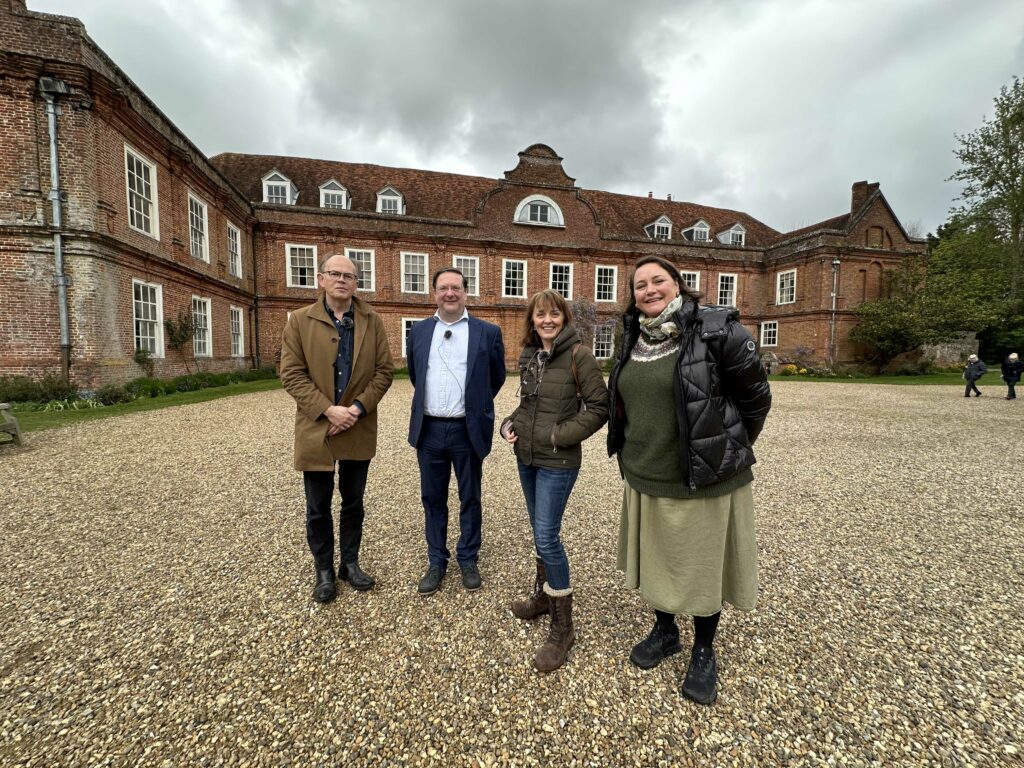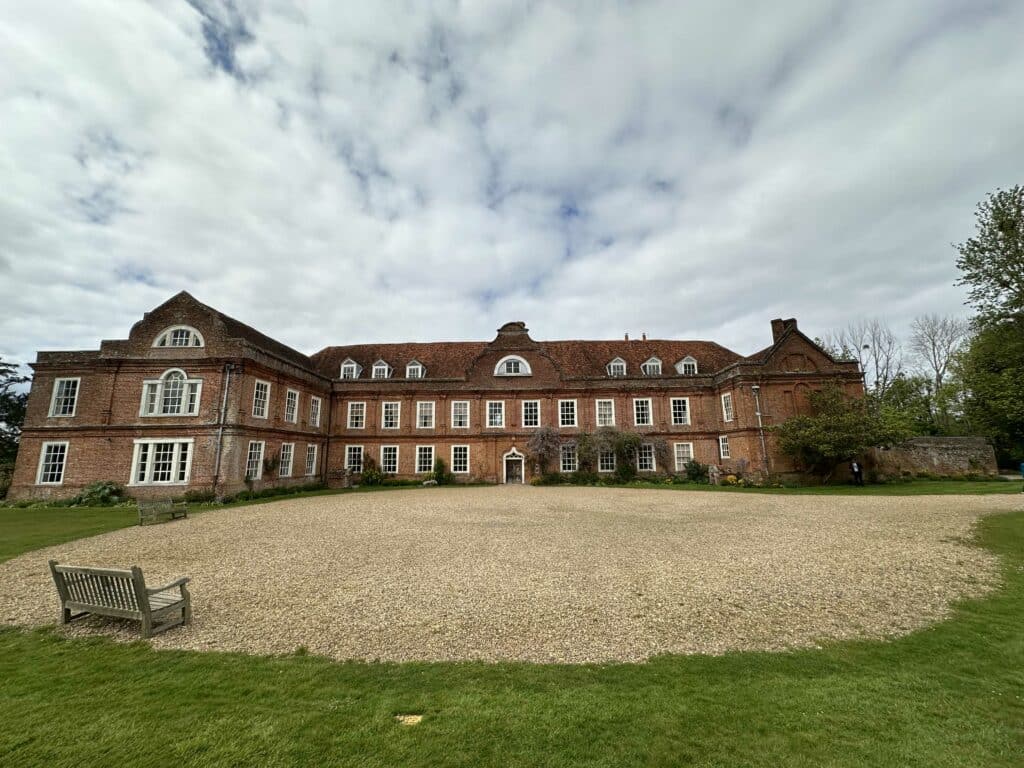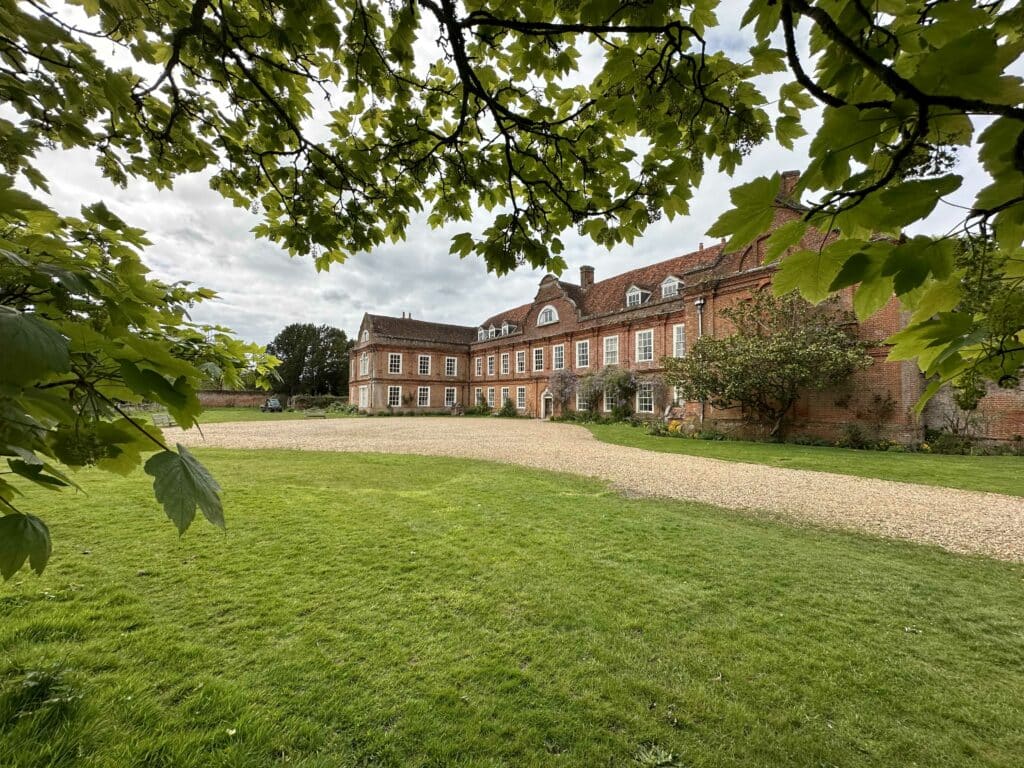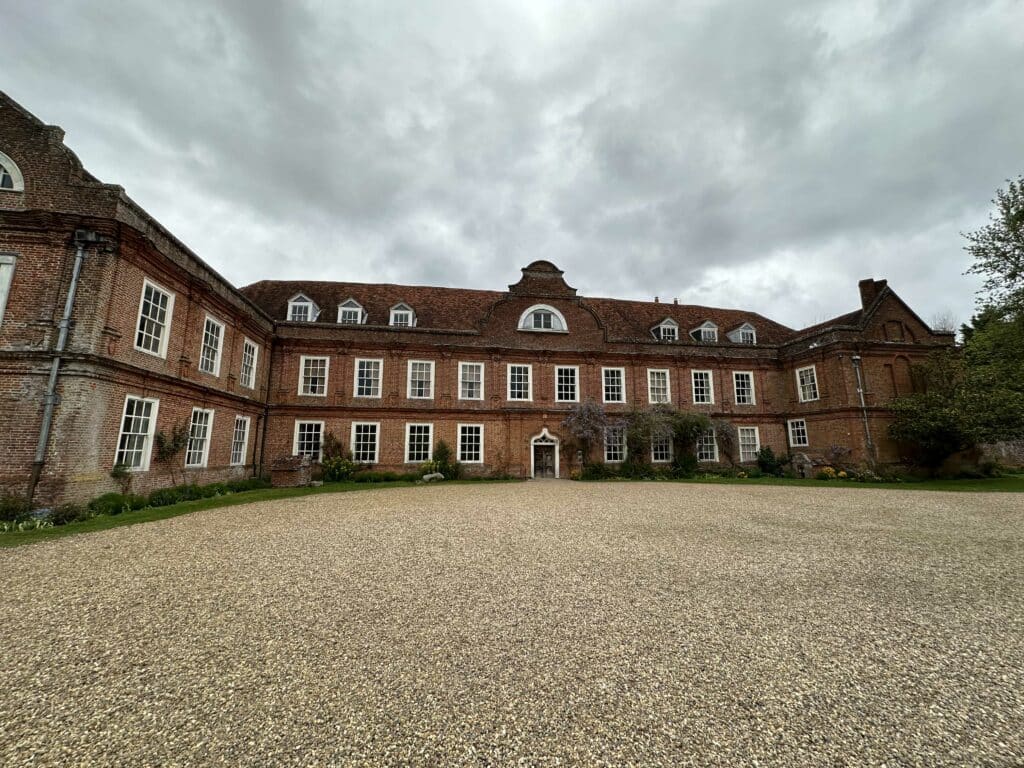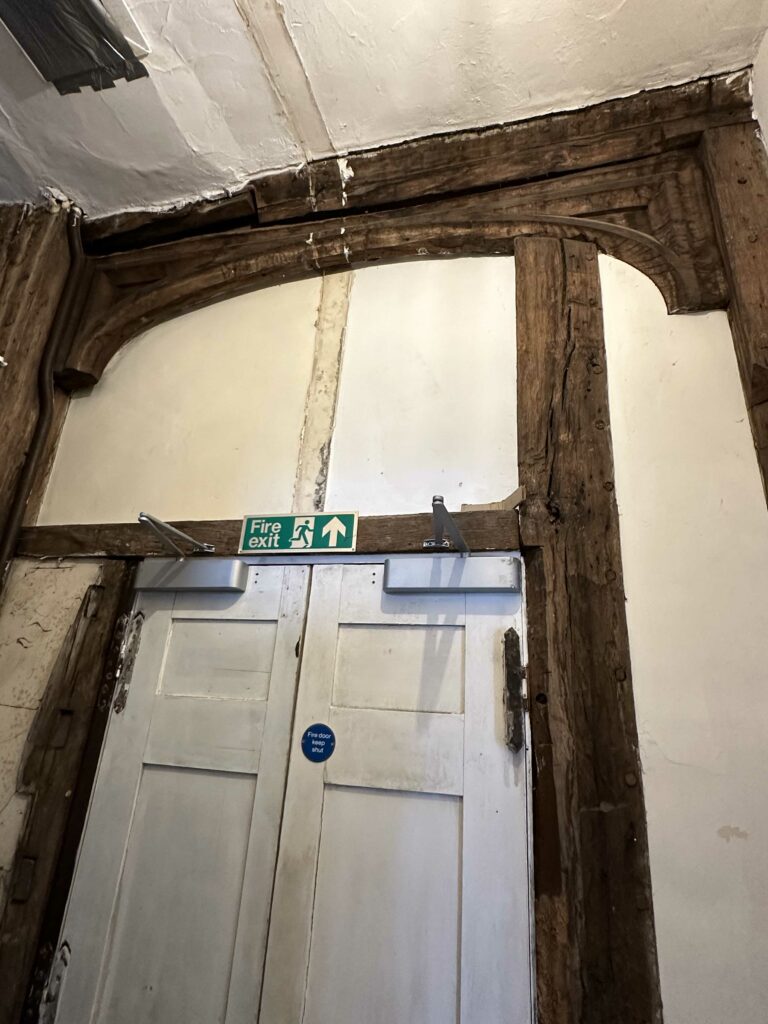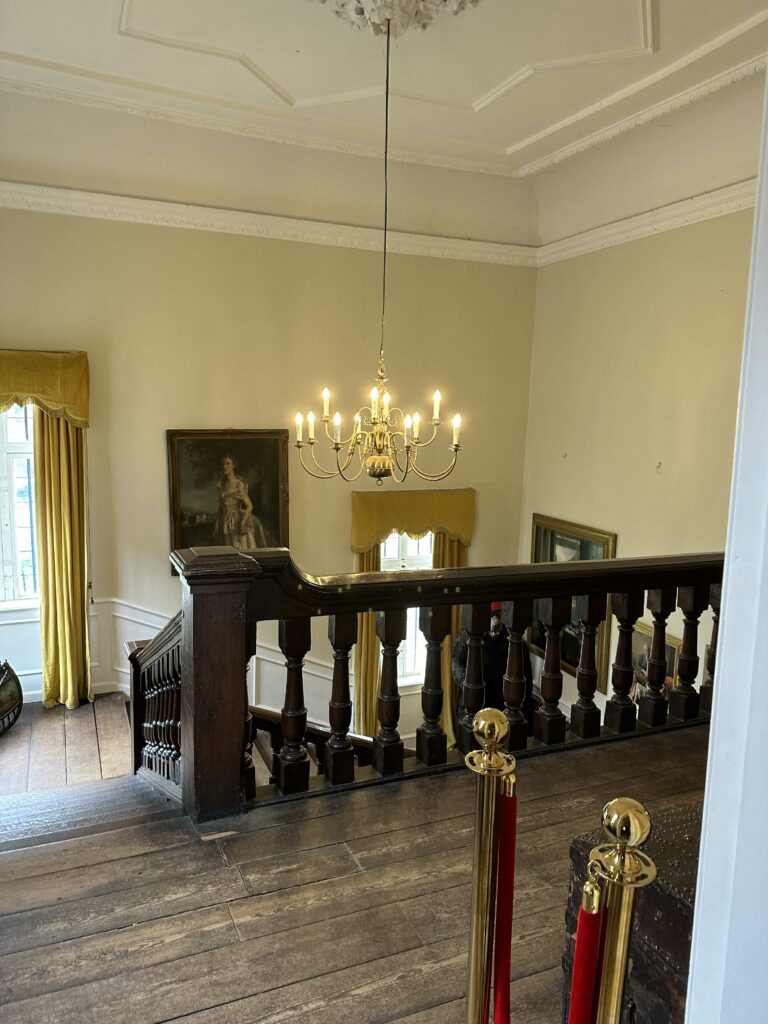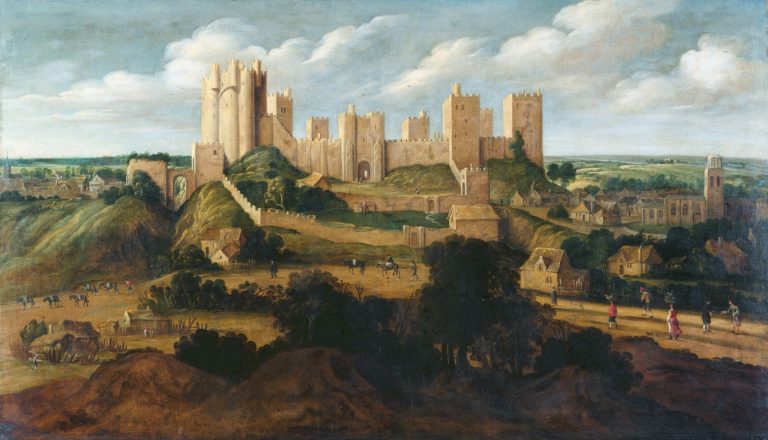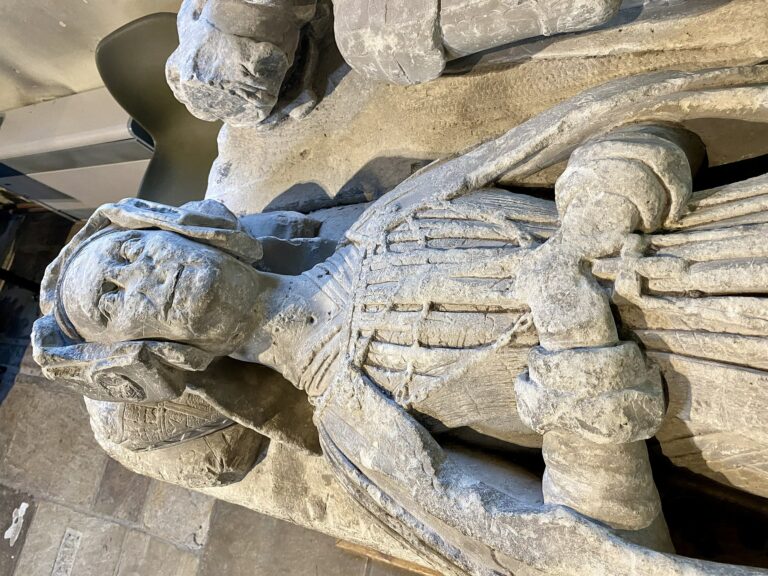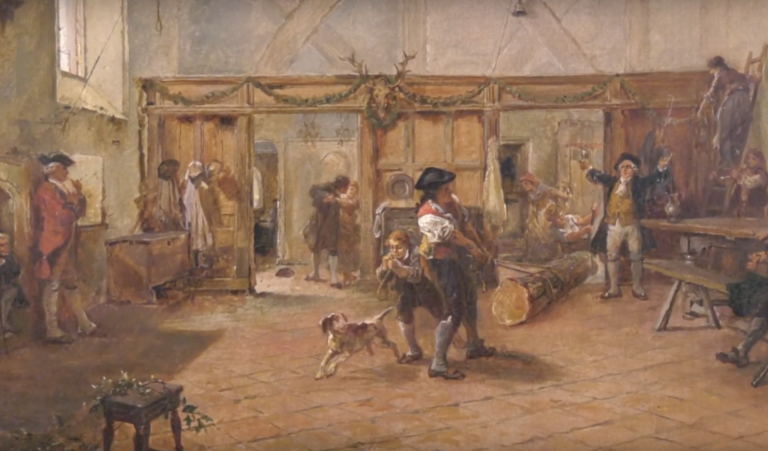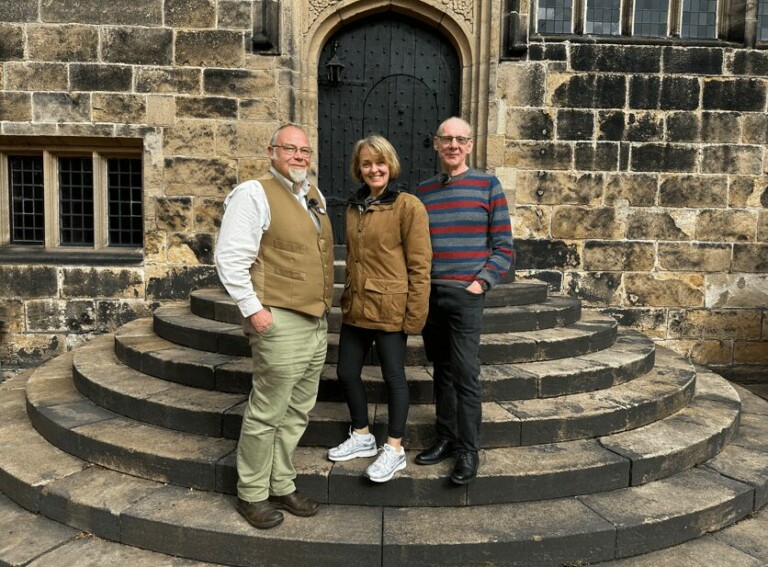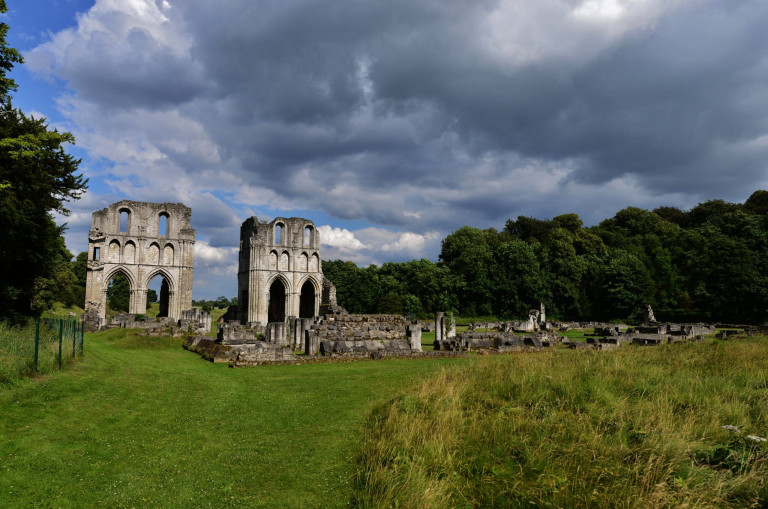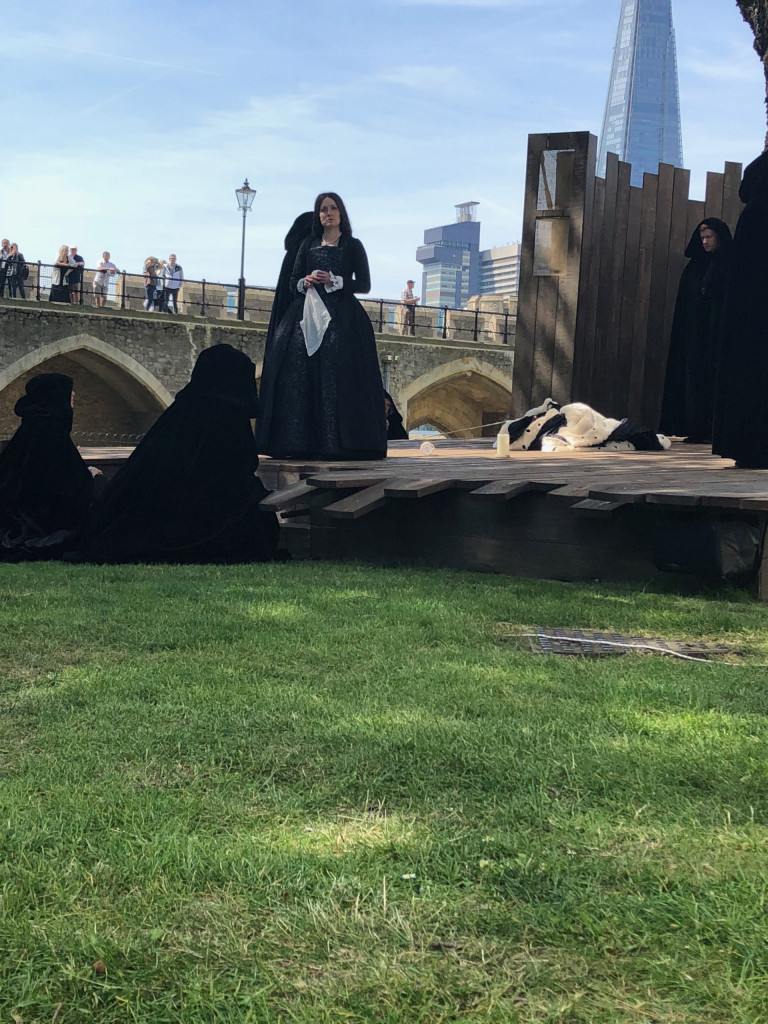West Horsley Place
Note: This is a show notes page accompanying my on-location podcast at West Horsley Place, recorded in the spring of 2024.
An Introduction to West Horsley Place
In this month’s episode, The Tudor History & Travel Show heads to West Horsley Place, a historic estate located in Surrey, southeast England. Because of its proximity to the Royal Palaces stretching along the Thames, Surrey had close connections to the Tudor monarchy. Henry VIII himself owned several estates in the county, including the magnificent Hampton Court Palace.
West Horsley’s history dates back to the eleventh century, with a manor house built not long after the Norman Conquest. The present house was originally timber-framed and constructed in the late fourteenth and early fifteenth centuries. It contained a central double-height hall and an imposing moat. Later, a red-brick façade was fixed to the original Tudor timbers, and Georgian windows were inserted, giving the house its current appearance.
Henry VIII gave the estate to his cousin and childhood friend, Henry Courtenay, in the sixteenth century. Born in 1498, Henry was the son of William Courtenay, 1st Earl of Devon, and Katherine Plantagenet, a daughter of King Edward IV. Henry married Gertrude Blount, the daughter of William Blount, 4th Baron Mountjoy. She came from a distinguished family and was a devoted member of Katherine of Aragon’s household.
James, Anthony, Sarah and Clare outside West Horsley Place. Image © The Tudor Travel Guide.
The Courtenays rose to prominence in England during the medieval period and held the title of Earls of Devon. They were among the wealthiest and most influential families in the southwest of England, and the family was closely tied to the Crown through marriage and political alliances.
In 1525, Henry Courtenay’s status at court was elevated further when he was created Marquess of Exeter. However, despite his close relationship with the King, in 1538, he was arrested and accused of involvement in a plot against Henry VIII’s government. He was convicted of high treason and executed in December 1538. Gertrude was left widowed but navigated the treacherous political waters of the Tudor court and survived into the reign of Queen Mary I. In the podcast, we will hear much more about the history of the Courtenay family and why Henry Courtenay had to die.
In this episode, we’re joined by Professor Anthony Musson, Head of Research at Historic Royal Palaces, James Clark, Professor of History at Exeter University and Clare Clinton, Arts, Heritage and Leaning Manager at West Horsley Place.
Note: There is unrestricted access to the first half of this podcast here. However, to listen to the full episode, you must be a member of The Ultimate Guide to Exploring Tudor England, The Tudor Travel Guide’s membership site. For more information on the membership, click here.
Visiting West Horsley Place
Today, West Horsley Place is not generally open to visitors. However, you can visit for an Open Day, a ‘Nooks and Crannies’ guided tour, a Film Tour, or for a special event.
In 1533, Henry and Gertrude Courtenay invited King Henry VIII to visit West Horsley Place. This visit was exceptionally well-documented, and with help from partners Historic Royal Palaces, the University of Exeter and Powderham Castle, a week-long celebration is planned for July. From tasting the King’s feast and trying out Tudor dancing to watching falconry and jousting displays, the Hosting Henry VIII Festival will take place between 27 July – 1 August 2024 – click here for more information.
West Horsley Place Image Gallery
Exterior of West Horsley Place. Images © The Tudor Travel Guide.
The remains of a timber-framed Tudor doorway, possibly the main doorway at the head of the original staircase leading from the Great Hall to the Presence Chamber. Image © The Tudor Travel Guide.
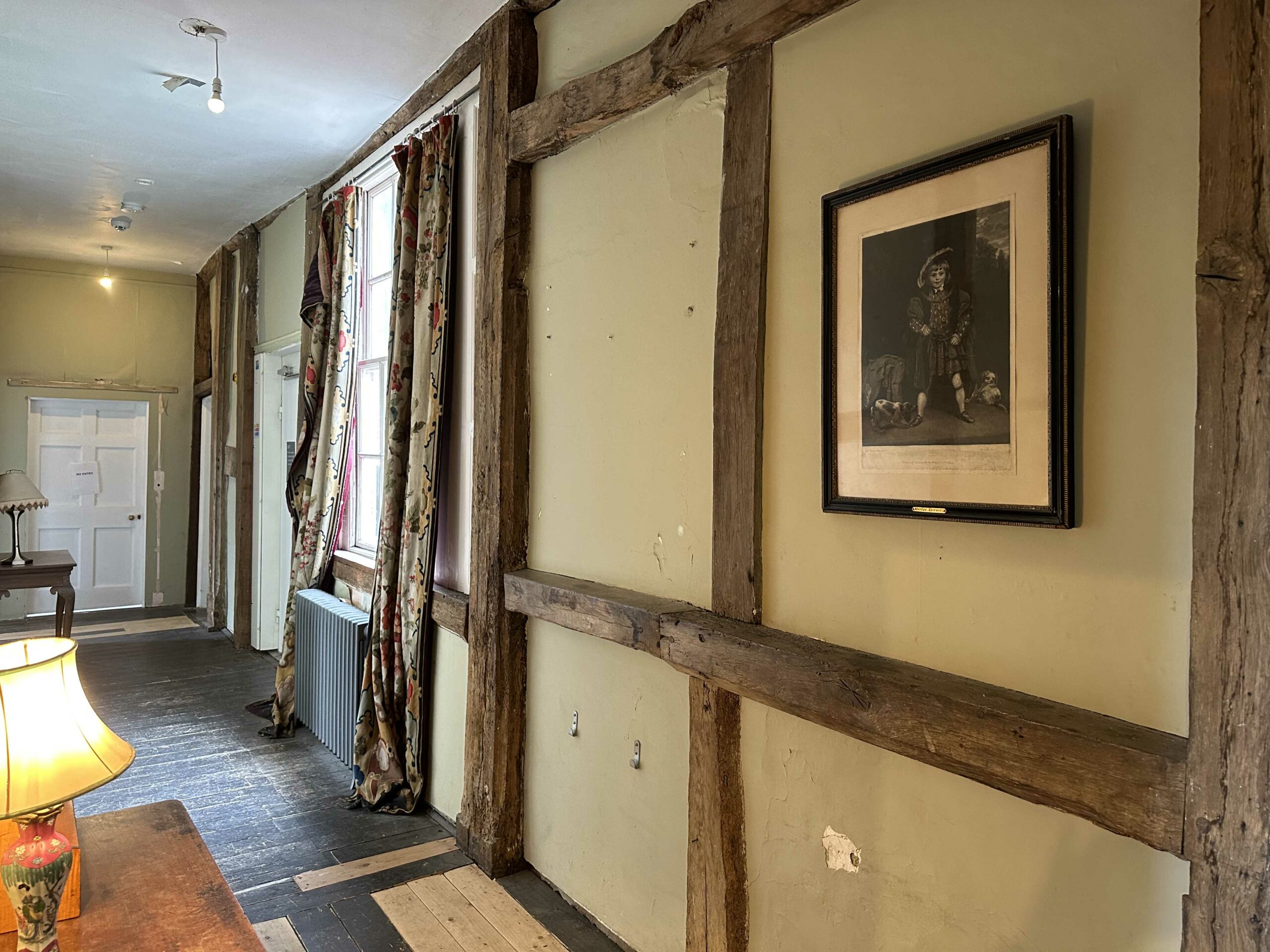
A ‘modern’ corridor in part of the west wing, originally the site of the privy apartments. The timber framing of the house becomes visible when you explore the interiors of the building.
Image © The Tudor Travel Guide.
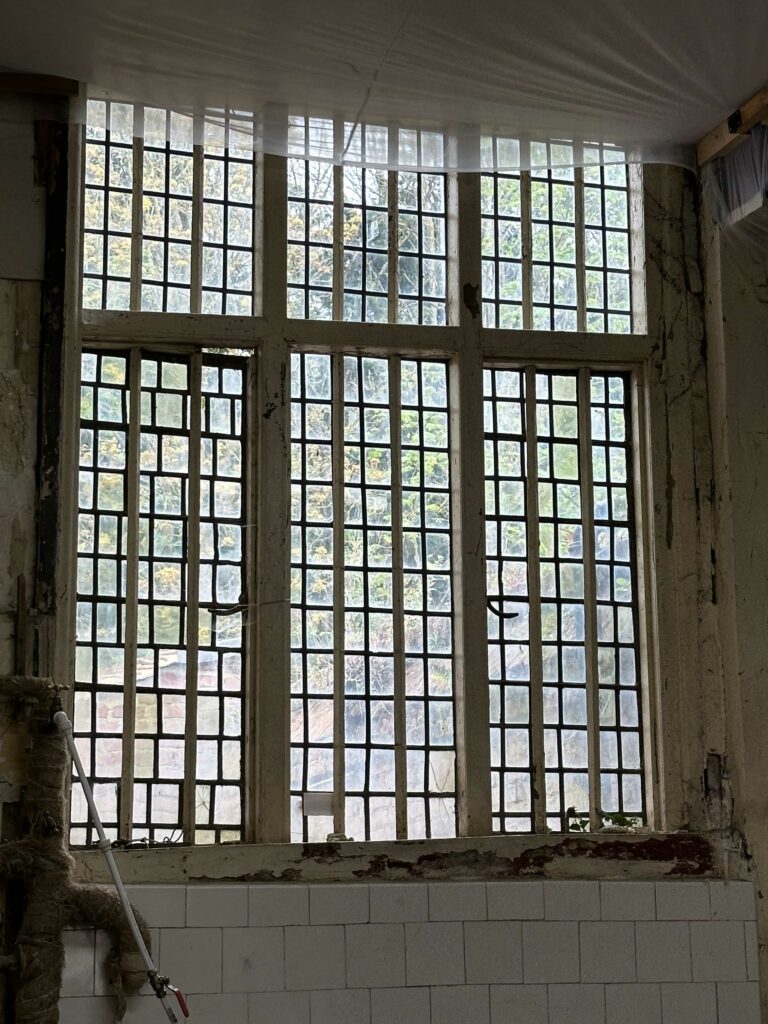
A double-height window in West Horsley’s Tudor kitchens.
Image © The Tudor Travel Guide.
Useful Links
Visiting information for West Horsley is here.
More Information on the Hosting Henry VIII Festival
From 27 July – 1 August 2024, West Horsley Place is hosting a uniquely immersive and authentic Tudor experience with an opportunity to visit a forgotten Tudor royal residence and experience the food, music, clothes, pastimes and personalities at the heart of Henry VIII’s visit in 1533.
For one week only, the great hall will be transported back in time and transformed with Tudor décor, costumed interpreters, music and authentic custom-made costumes and weaponry. To find out more about the different special events throughout the week, click here.
Historic Royal Palaces has been awarded an Arts and Humanities Research Council (AHRC) network grant to explore the political and cultural significance of Henry VIII’s royal progresses. The yearlong project will assess the characteristics, iconography, and material culture associated with Tudor royal progresses, particularly those of Henry VIII. You can find out more here.
Visiting information for Powderham Castle is here, and Tiverton Castle is here.
Earlier this year, The Tudor Travel Guide was a stop on the virtual book tour for West Horsley Place: At Home with Gertrude Courtenay, Marchioness of Exeter by Sylvia Barbara Soberton. Click here to find out more.
If you’re interested in accessing the full podcast, or suggestions for historic places to visit nearby, you can join my membership The Ultimate Guide to Exploring Tudor England, which brings together all my best, most comprehensive content in one place: blogs, videos, live chat, progresses, maps, itineraries, travel information and podcasts. For more information on the membership, click here.

